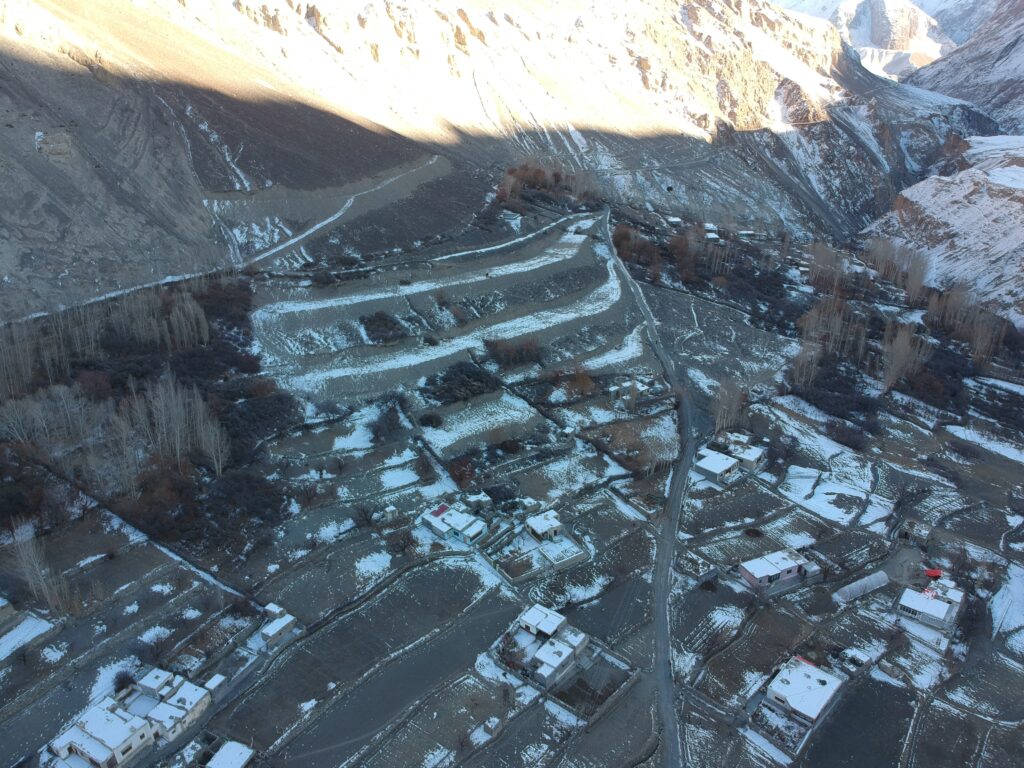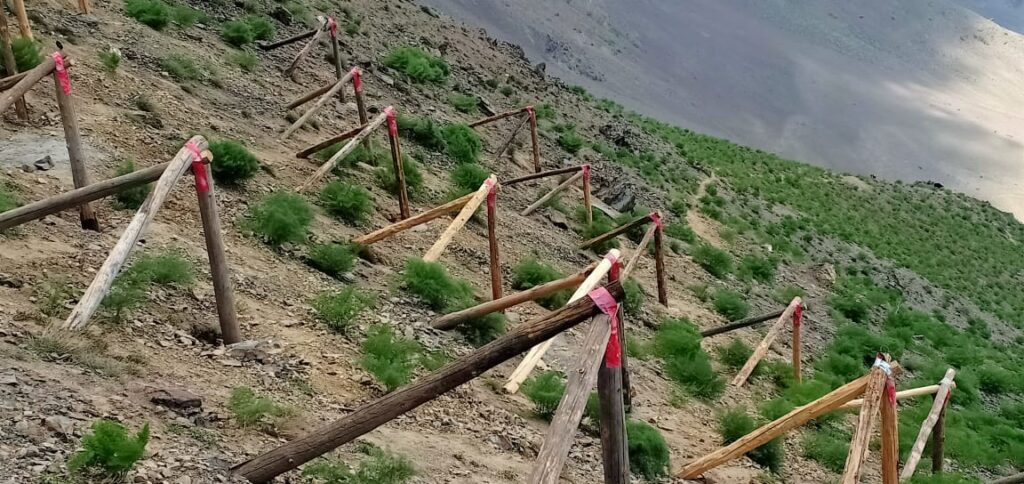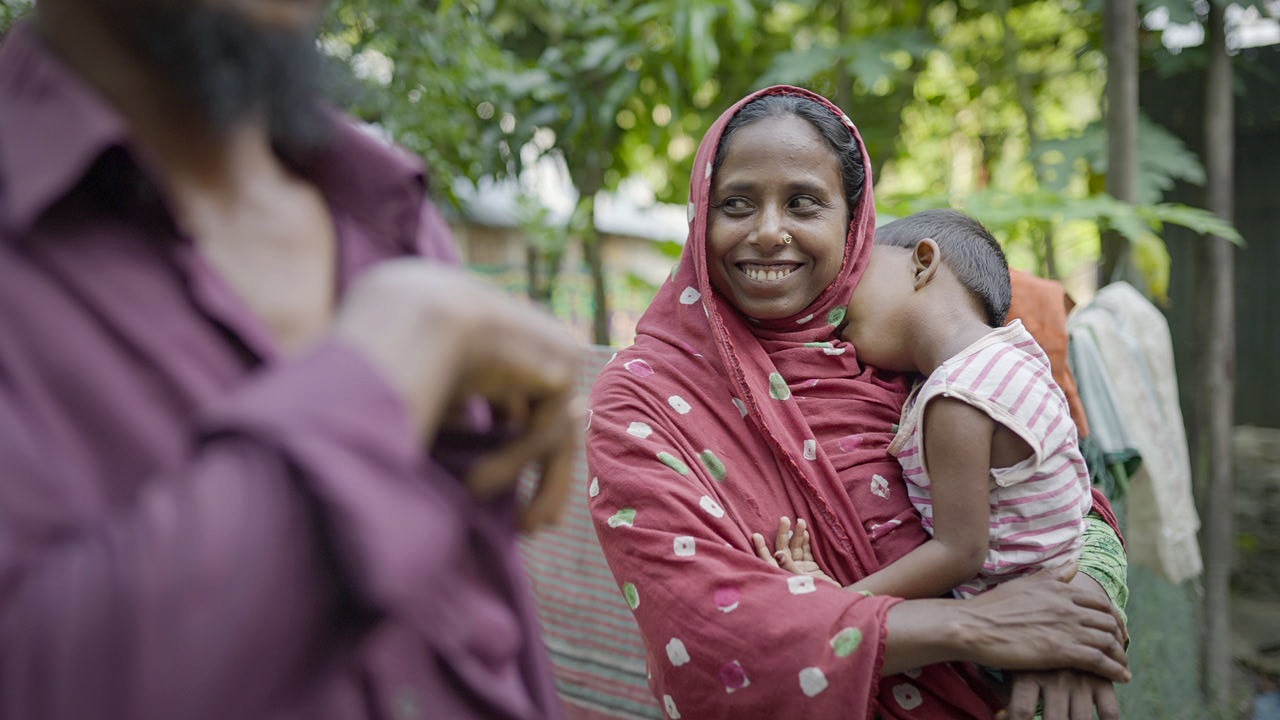
Averted Disaster Award 2023
Runner Up
Aga Khan Agency for Habitat, Pakistan
Fighting Avalanche Risk in the High Mountains of Pakistan
Background
The northern regions of Pakistan, Gilgit-Baltistan and Chitral (GBC), home to some of the world’s largest mountain ranges including the Hindu Kush, the Himalayas and the Karakorum. These regions are characterised by rough and rugged terrain. Over 2 million people living in narrow gorges, foothills and steep terrains, face multiple natural hazards. Winters are long, harsh and isolating with heavy snowfall. According to news reports, only this year, some villages/valleys remained cut off from the rest of the country for more than 15 days (Nagri, 2023). The northern mountainous regions of Pakistan experience heavy snowfall and regularly witness snow avalanches during the winter and spring seasons (Gurung et al., 2023). As such these natural hazards pose a constant threat to human life, property, and critical infrastructure in these high-altitude mountain communities of GBC.

The Aga Khan Agency for Habitat, Pakistan, an agency of the Aga Khan Development Network, works with these communities to reduce disaster risk and adapt to climate change. Since 1992 AKAH has recorded more than 350 avalanche events in parts of GBC, resulting in the tragic loss of over 310 lives and causing numerous injuries. These avalanches have also left a trail of destruction, demolishing hundreds of houses, link roads, and critical infrastructure.

Averting Avalanche Risks
To identify, understand and address this natural hazard, AKAHP’s technical experts conducted extensive Hazard Vulnerability & Risk Assessments (HVRA) of villages and towns across GBC. The assessment data reveals that over 250 villages across only four out of 12 districts of GBC are exposed to immediate avalanche risks. Alarmingly, more than 1,100 households are at direct risk from these avalanches. While it may not be possible to stop avalanche events, AKAHP has pioneered a community-driven approach to help minimize these risks.


AKAHP Winter Preparedness and Avalanche Readiness Programme (WPRAP)
WPARP is a key aspect of AKAH’s Disaster Risk Reduction (DRR) and mitigation framework. AKAH Pakistan started its snow avalanche-related interventions in 2012, initially focusing on 10 villages that were extremely vulnerable to snow avalanches. With the increasing frequency of snow avalanche disasters in the region, this project has been expanded to over 250 villages across GBC.
This seasonal preparedness programme is designed to monitor risks, generate early warnings and create awareness and develop community capacities (Nasab, 2021). As such, community-level response plans are developed to cater to avalanche incidents. Since the sustainability of this programme hinges on local actors, AKAHP has created and capacitated teams of trained village-level volunteers i.e., Community Emergency Response Team (CERT) to educate the local communities and to improve preparedness.


In addition to localized face-to-face training and awareness sessions, AKAH Pakistan has developed educational material like pamphlets, brochures, road signs and interactive videos (such as the one on the left) to educate communities about the key steps that one can take to protect themselves and their community from the threat of avalanches.
Localised Weather Forecasting
Remote mountain communities in Gilgit Baltistan and Chitral (GBC) lack accurate and timely weather forecasting and early warning systems. To fill this gap AKAH has established community-based Weather Monitoring Posts (WMPs), in 53 critical locations in remote valleys where avalanches pose a severe threat to human settlements. WMP volunteers trained by AKAH collect and report daily weather data on temperature, snowfall, wind, rain and more, as well as any data on avalanches that occurred.
AKAHP experts analyse this data and provide avalanche forecasts and alerts which are disseminated to communities by AKAHP’s through the local structures created as part of the disaster risk reduction framework.
AKAH’s winter preparedness programme promotes a community-based approach to disaster risk management. Training local volunteers to monitor daily weather and in em ergency response in at-risk villages has improved awareness, preparedness and trust of the community and reduced the challenges related to timely communication and evacuation. As the case of Ucho Gole in Chitral district shows, these efforts have helped save lives and build self-reliance.

The Story of UCHO GOLE
On 4th January 2016 in Ucho Gole, a village in Lower Chitral, the local weather monitoring and community emergency response volunteers received an avalanche alert from AKAH. One volunteer in the village rushed to disseminate the alert to 12 families who were living in the avalanche risk zone. Out of these 12, two (02) houses were in the extreme risk zone. When the volunteer reached one of the houses, the family was entertaining some guests who had come to visit them, having no idea about the looming danger. In the mountainous region, hospitality is elaborate and when the volunteer arrived, the family also offered him a hot cup of tea. Knowing the level of the imminent threat, sacrificing politeness, he refused the offer and convinced the family members and their guests to leave at once and evacuate to a safer location. Though they resisted initially, he was able to convince them to evacuate to safe place nearby just in time before an avalanche came down and destroyed their homes completely. Luckily, all of the family members, their guests and the volunteer (17 people) were saved and there was no regret in refusing tea.
Conclusion
AKAH’s winter preparedness programme has helped in saving lives through improving community preparedness It has also strengthened coordination among disaster management authorities including provincial disaster management, and voluntary bodies. Whenever an avalanche occurs, AKAH’s Search and Rescue Team (SART) volunteers, mobilise with local authorities and Rescue 1122 as first responders.
By community involvement and prioritizing the safety and well-being of those living in these vulnerable areas, we can make significant contributions towards reducing the risk and impact of avalanches in Pakistan’s mountainous regions.
Protecting mountainous communities from deadly avalanches requires a proactive approach that emphasizes timely, effective emergency response and long-term resilience-building initiatives, empowering communities with the knowledge and capacities to prepare, protect and recover from disaster.

Contributor:
Mehar Aftab, Communication Coordinator, Aga Khan Agency for Habitat Pakistan
Syed Gohar Ali Shah, Manager, Partnerships, Aga Khan Agency for Habitat Pakistan
Sher Wali, Manager, Risk Anticipation, Aga Khan Agency for Habitat Pakistan
Avalache terracing at the trigger point at Khishwakht Washich, Upper Chitral
Wooden tripods installed at the avalachne triggering point in Kishwakhat, Washich, Upper Chitral
References
Gurung, D. R., Saratbekova, R., Sahim, S. A., Walizada, K. M., Wali, S., Karim, D., Dobariya, R., & Nasab, N. (2023). Community Resilience Through Local Action: AKAH’s Winter Preparedness and Avalanche Readiness Programme. In Springer eBooks (pp. 345–363). https://doi.org/10.1007/978-3-031-24541-1_16
Nagri, J. (2023, February 24). Snowfall, avalanches cut off GB, Chitral villages. DAWN.COM. https://www.dawn.com/news/1738837
Nasab, N. (2021, May 25). The Winter Preparedness and Avalanche Readiness Programme, a comprehensive avalanche preparedness plan in Afghanistan, Pakistan and Tajikistan. Adaptation at Altitude. Retrieved June 24, 2023, from https://adaptationataltitude.org/solutions-portal/the-winter-preparedness-and-avalanche-readiness-programme-a-comprehensive-avalanche-preparedness-plan-in-afghanistan-pakistan-and-tajikistan#:~:text=The%20Winter%20Preparedness%20and%20Avalanche%20Readiness%20Programme%20is%20a%20comprehensive,in%20Afghanistan%2C%20Pakistan%20and%20Tajikistan.










